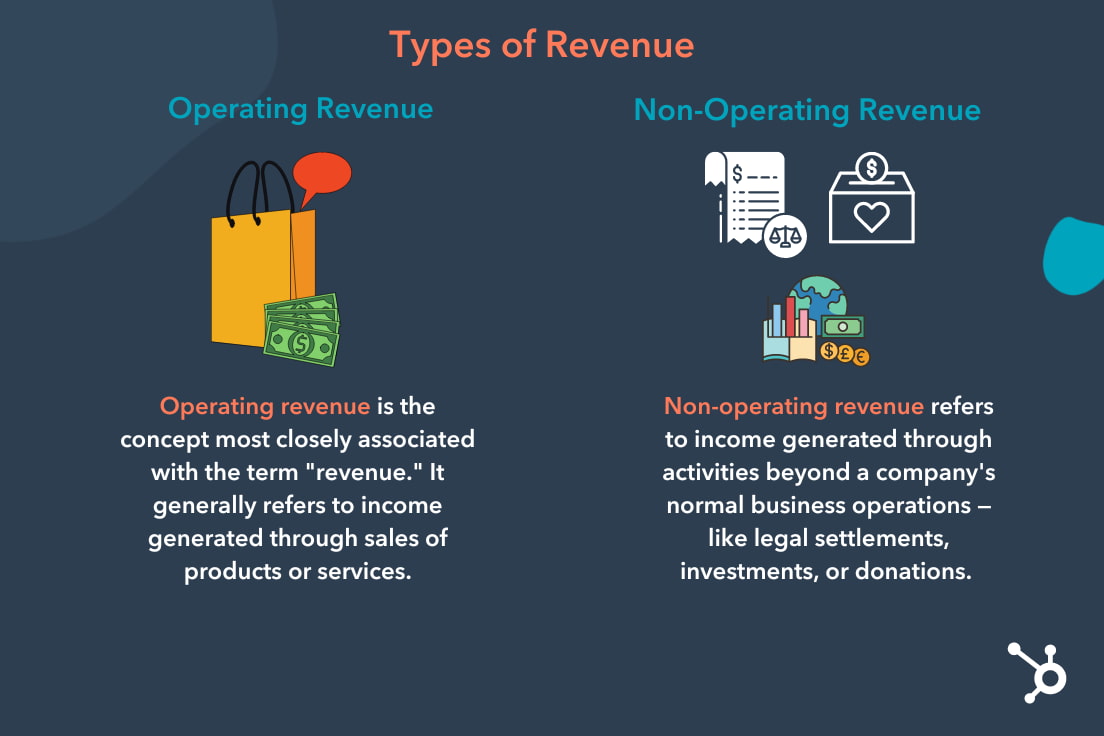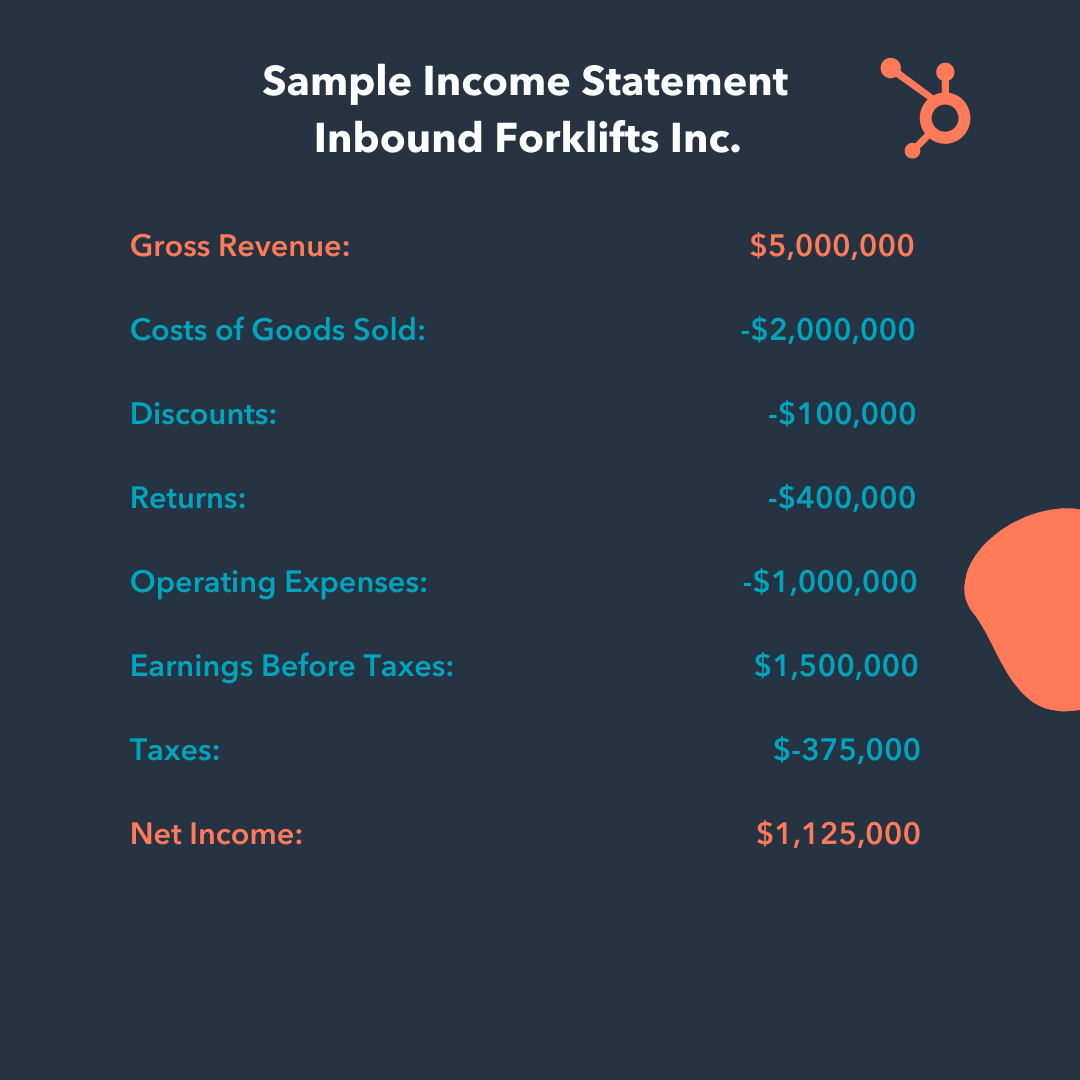Revenue is the first metric that appears on an income statement, and for good reason. It's the starting point for calculating profit, and generating enough of it means your business can cover operating expenses and stay afloat in the long run.

Yet, despite revenue's importance, there's a lot of confusion around it. What does (and doesn't) count as revenue? Is it the same as profit? And does it guarantee positive cash flow?
Let's get into the basics of revenue, how to calculate it, and how it differs from profit and cash flow.
What is revenue?
Revenue is the income a business generates through the sale of products or services, interest, royalties, or other income sources during a fixed period of time. The figure is sometimes referred to as 'sales' or 'the top line.'
Revenue is generally the first figure reported on an income statement — that's where the "top line" nickname comes from.
How your business calculates its revenue rests on the accounting method you use. If your business employs accrual accounting, revenue will include sales made on credit — accounting for money owed in addition to payments that have already come through. If your business uses cash accounting, the only revenue you'll report is from payments you've already received.
There are two main types of revenue businesses need to consider — operating and non-operating. Let's take a closer look at those two concepts and the differences between them.
Types of Revenue

Operating
When you think about your business's revenue, operating revenue is the concept that typically comes to mind. It's what a company produces from its primary income-generating activities — most commonly sales.
Operating Revenue Example
A clothing brand generates most of its operating revenue through merchandise sales at storefronts.
Non-Operating
There's also another type of revenue — non-operating revenue — which occurs outside of a business' primary operations. This type of revenue is typically lower than operating revenue and includes income sources like legal settlements, investment income, or donations.
Non-Operating Revenue Example
That clothing brand from the previous section generates non-operating revenue via a legal settlement with another company over intellectual property.
Is revenue profit?
While both revenue and profit are strong indicators of your business's financial health and performance, they are not the same — and that difference stems primarily from how each relates to expenses.
Simply put, revenue is your business' income before expenses, whereas profit is your business' income after them. The term "expenses" covers any costs associated with operating a business.
Those can include employees' salaries, rent for office space, insurance, costs of goods sold, travel, advertising, legal fees, or any other costs a business incurs when producing, selling, or promoting its product or service.
Profit takes revenue and deducts any of those expenses from the same period. Ideally, after subtracting all your expenses you still have income remaining — making your business profitable.
What is the revenue formula?
Calculating revenue is a relatively straightforward process. Use one of the following formulas:
For product-based businesses, multiply the number of units sold in a statement period by the average price.
For service-based businesses, multiply the number of customers or contracts in a statement period by the average service price.
Does revenue = cash flow?
If you're generating revenue, you're also generating cold hard cash — right? Not necessarily. Many new business owners make that assumption, and it can be costly.
Businesses should never conflate high revenue with positive cash flow. In fact, it's possible for your revenue to be high, while your cash flow is negative.
Here's an example: Suppose your business sells a $5,000 forklift to a construction company on May 1st. Technically, you have $5,000 in revenue — but the construction company has until May 31st to pay the invoice.
Meanwhile, the cost to deliver the forklift is $500 — so your business has $500 in cash outflow before it can collect the $5,000 in revenue on May 31st.
Sometimes the exchange of products and services with cash isn’t simultaneous, which is why it's important to remember that high revenue means your products or services are selling well — not that your business is making liquid cash.
Revenue on the Income Statement: Top vs. Bottom Line
The top and bottom lines of your income statement are typically considered the two most critical figures on it.
The top line is your company's gross revenue, which is the combination of your operating and non-operating revenue during a statement period.
Therefore, when a company has "top-line growth," it generally means it's seeing an uptick in sales or revenue. That said, gross revenue isn't necessarily indicative of your ability to generate profit.
The bottom line is your company's net income, which is your gross revenue minus any expenses, allowances, refunds, and discounts during the same statement period.
For the sake of example, let's consider that forklift company from earlier. Let's say the company sells 1,000 forklifts at $5,000 each.
- That would make its gross revenue $5,000,000.
- To help move the last of its inventory, the company decided to offer a $500 discount on the last 200 forklifts it sold — meaning it took a $100,000 hit on discounts.
- 100 of the forklifts were returned for an 80% refund — so it saw $400,000 in returns.
- The costs of goods sold (COGS) required to produce each forklift is $2,000 — so the business has to account for $2,000,000 worth of those expenses.
- The sum of its operating expenses for the period — including employees' salaries, rent for office space, marketing, employee travel, and legal fees — was $1,000,000.
- Those expenses add up to $3,500,000 — making the company's earnings before taxes $1,500,000.
- The business's total tax rate adds up to 25% — amounting to a $375,000 deduction.
That adds up to a $3,875,000 hit to the company's gross revenue — making its net income (or bottom line) for the period $1,125,000.
Let's look at what that would all look like on an income statement.

Final Thoughts
Revenue is the magic metric for assessing the financial health of your company. Since companies generally grow by increasing revenue, it's also a great indicator of future growth. But revenue is only the starting point — businesses must also consider how their expenses and operating costs are (or aren't) impacting their bottom line.









![The Plain-English Guide to Revenue Run Rate [Infographic]](https://blog.hubspot.com/hubfs/run-rate.jpg)

